“I was taken along on some of their field trips to help spot the flowers on one side of the road while Lois scouted the other side and Frank drove the car.” — Clermont Huger Lee, 1983
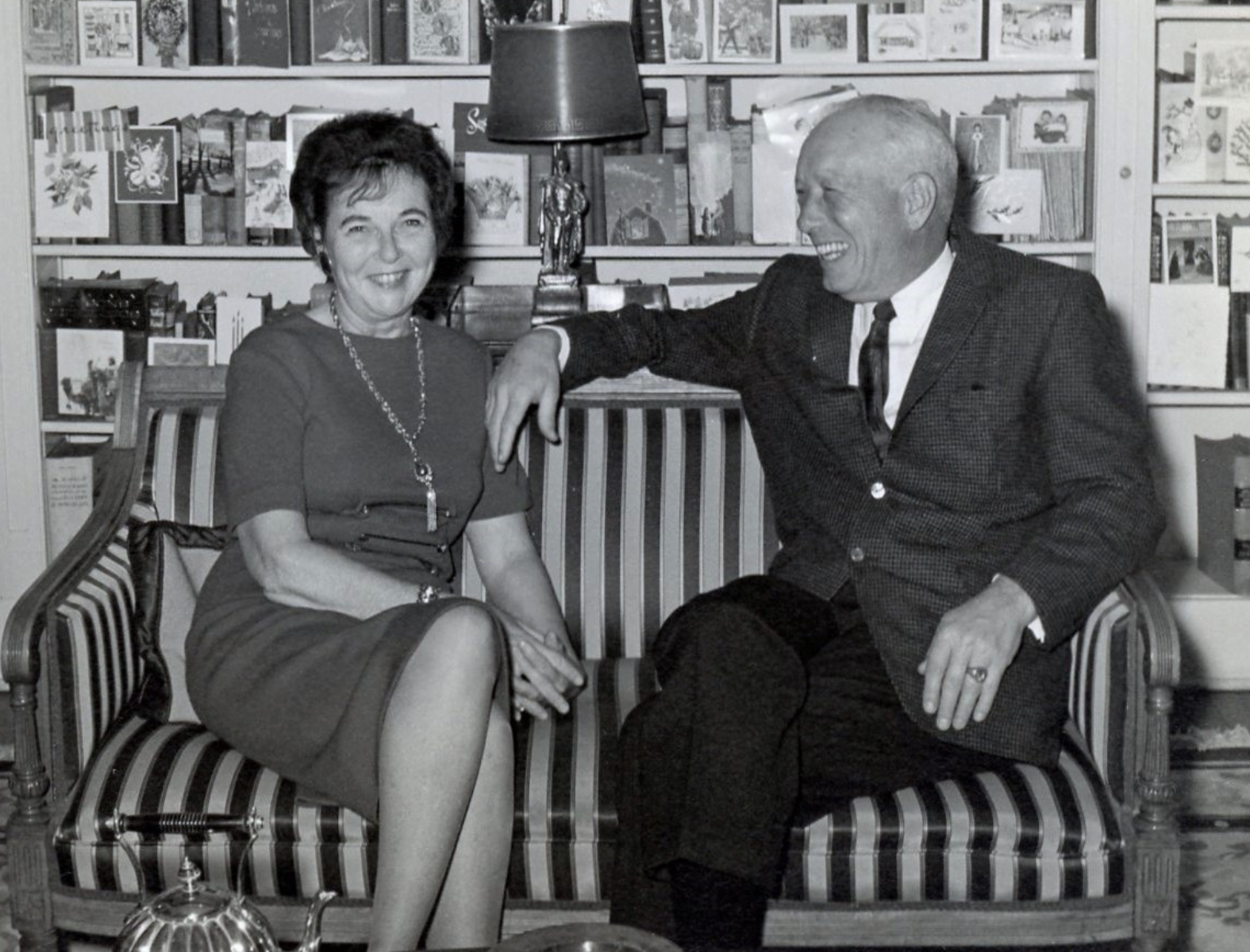
Frank and Lois Dulany, Christmas, 1962


One of the many books on wildflowers given to the Station Library.
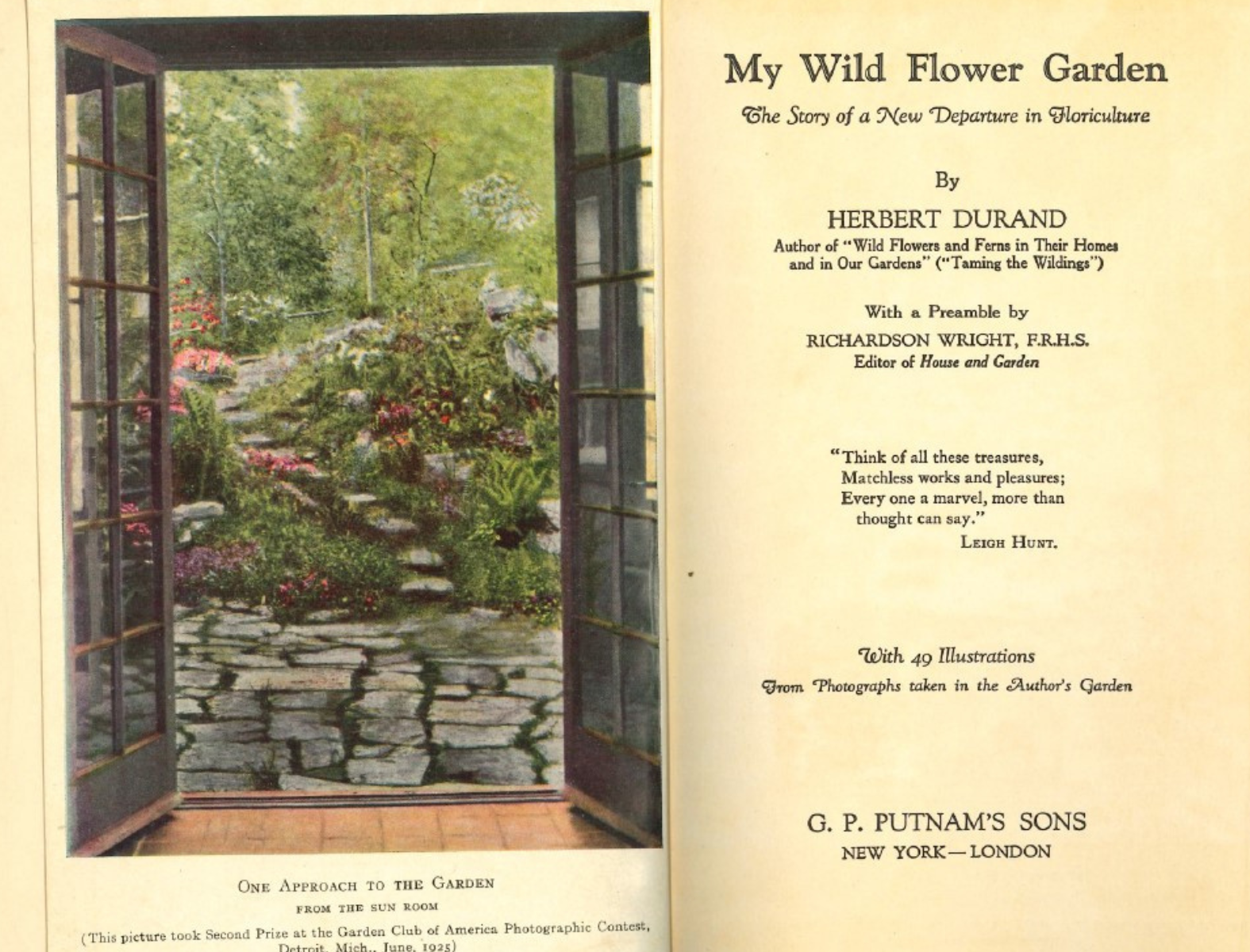
Frank’s first donation to the Station.
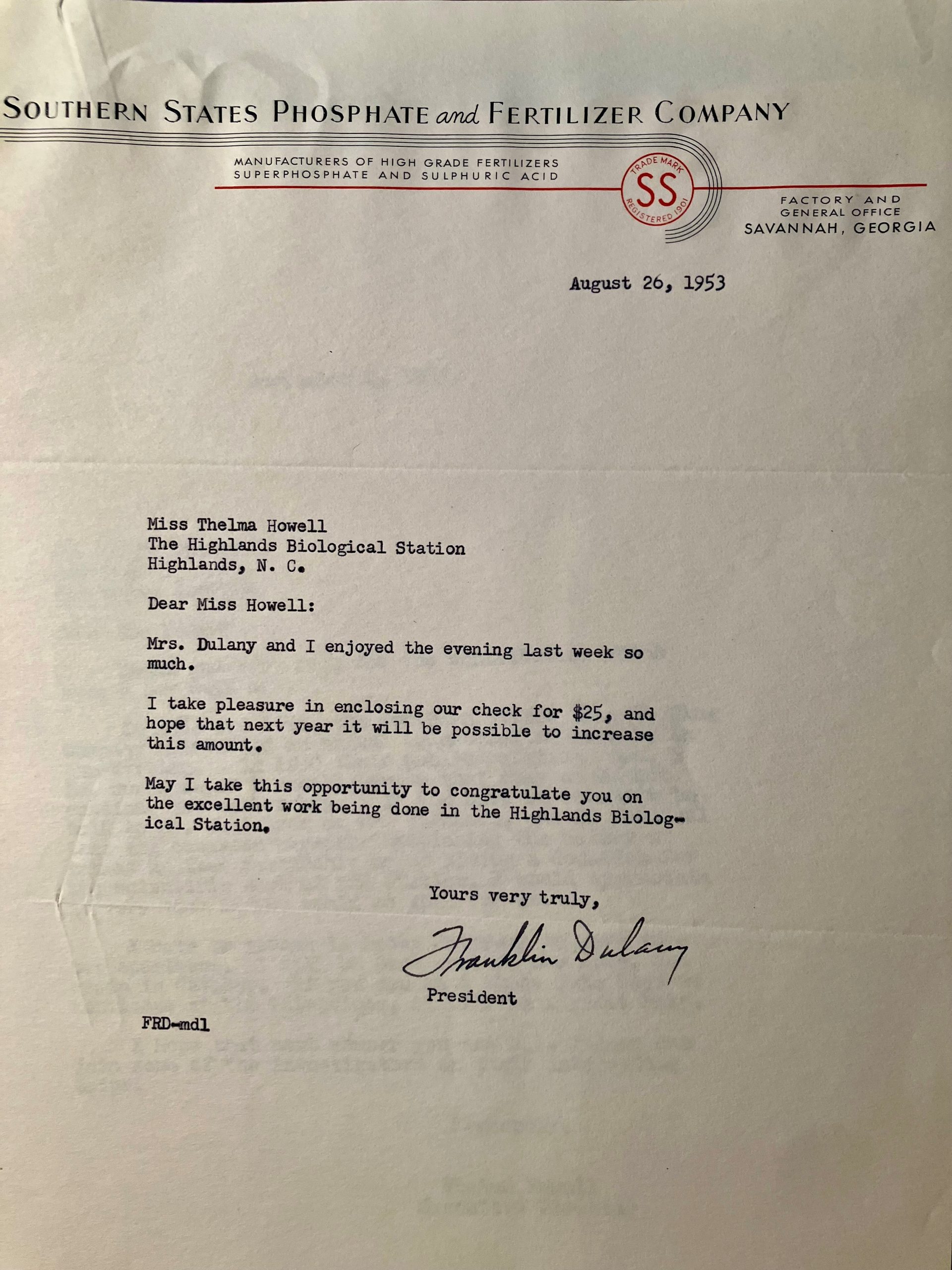
Thelma and Frank’s relationship continued over the years.
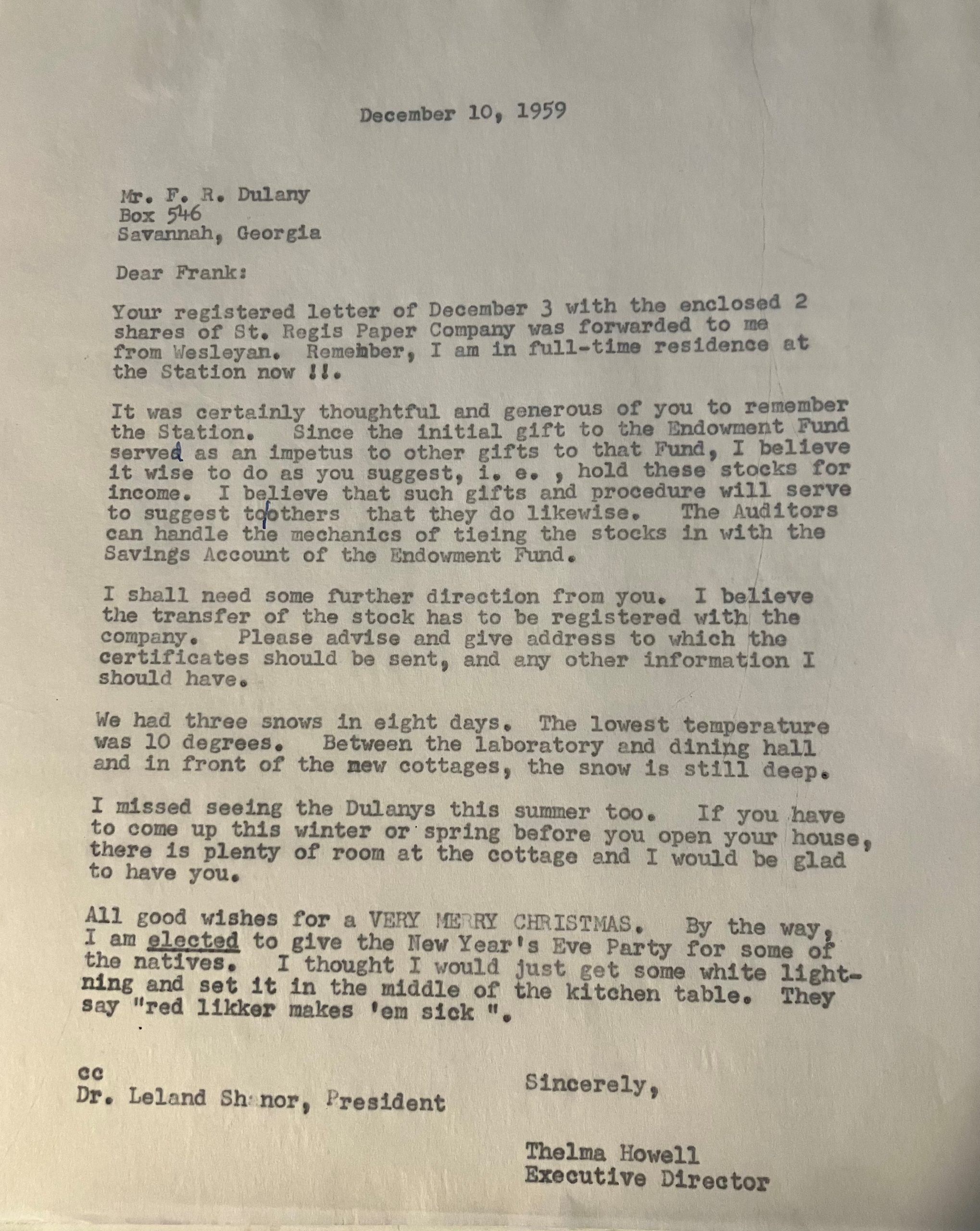

Dulany Bog

Trustee and Benefactor to Highlands Biological Station
Early Life and Career
Frank Dulany was born in Philadelphia and spent his early years in New Jersey. He attended Rutgers University, where he developed a strong interest in agriculture, finance, and business management. After graduation, he was sent to Savannah, Georgia, to manage the finances of a struggling fertilizer company. His success in that role led to his eventual presidency of Southern States Phosphate and Fertilizer Company, which, by 1924, had become the largest fertilizer factory in the U.S. and the second largest in the world.
In Savannah, Frank met Mary Lois Howard (1901–1987), whom he married in 1923. The couple had two children—Anne Howard and Franklin Reed Dulany, Jr.—with Reed Jr. and later Reed III continuing the family’s business legacy.
Frank and Lois Dulany: Amateur Botanists
Frank and Lois shared many hobbies, including collecting books, antiques, art, and stamps. Their passion for nature, particularly native plants, led them to Highlands. By 1954, with Frank as photographer and Lois as an expert observer, they began documenting native flora on field excursions throughout the Southern Appalachians.
Using a 35mm Leica and later a Nikon camera, Frank captured native plants in their natural habitats—from wide habitat shots to close-up images of blooms and fruiting structures. Together, they donated over 2,000 Kodachrome slides to the Station, each carefully cataloged by common and botanical name, location, and date.
The Dulanys shared their botanical knowledge through lectures at HBS and worked closely with other amateur and professional botanists, including Thelma Howell, Ralph Sargent, Lindsay Olive, and Henry Wright.
“I was taken along on some of their field trips to help spot the flowers on one side of the road while Lois scouted the other side and Frank drove the car.”
— Clermont Huger Lee, 1983
Service to Highlands Biological Station
Frank Dulany first appeared in HBS records in 1947 as a member of the Building Committee. In 1953, he began making annual contributions—including a 1959 gift of stock, the first of its kind for the Station. Elected to the Board of Trustees in 1954, he became Chair of the Building Committee in 1957, helping guide major renovations and the construction of dormitories, labs, and improvements to the Weyman Building, aided by a $60,000 grant from the National Science Foundation.
After 18 years of service, Frank was named an Honorary Trustee in 1972.
He and Station Director Thelma Howell maintained a long-standing friendship, documented in dozens of letters covering botanical observations, finances, construction updates, and daily life. This correspondence continued with Director Richard Bruce until Frank’s passing in 1982 and now totals over 100 preserved letters.
Dulany Bog: A Lasting Legacy
In the 1960s, Frank sold his interest in Dulany Frozen Food Company and began acquiring large tracts of land in Georgia and North Carolina, including properties near Highlands. These included Chinquapin Mountain, Shoal Creek, Snowbird, Intermission in the Highlands Country Club, and The Meadows, which became known as Dulany Bog.
In 1965, the Dulanys donated an 8.6-acre mountain bog to HBS. The Board described it as “a biological treasure… of botanical and zoological rarities.” A formal survey conducted in 1974–75 by William Floyd identified more than 80 vascular plant species, including:
-
Sarracenia purpurea (pitcher plant)
-
Eriophorum virginicum (cotton grass)
-
Helonias bullata (swamp pink)
In 1979, Dulany Bog was added to the North Carolina Register of Natural Heritage Areas. Later additions by the U.S. Forest Service (1994, 27 acres) and the NC Department of Agriculture (2008, 38 acres) further expanded its protection.
Today, the bog is managed collaboratively by HBS, the Highlands-Cashiers Land Trust, the NC Department of Agriculture’s Plant Conservation Program, and the U.S. Forest Service. Volunteers and staff conduct annual invasive plant removal to maintain this rare and sensitive habitat.
The Dulanys’ Enduring Impact
Frank and Lois Dulany were deeply involved with HBS for nearly 30 years—as supporters, advisors, benefactors, and friends. Their gifts of time, knowledge, and land have left an enduring mark on the Station’s landscape, collections, and community.
“The Dulany legacy continues.”
While researching Frank and Lois Dulany for this story, we were fortunate to connect with three of their descendants: their grandson, F. Reed Dulany III, and two of Anne Compton Dulany’s children—Holly Compton Shields and Key Compton. What began as a simple search for a single photograph of Frank and Lois has resulted in the discovery of at least three wonderful images of the couple. Holly also shared a cherished memory: “Being the oldest grandchild, I was so fortunate to spend summers in Highlands with them. My grandmother, Mimi, was an amazing ‘spotter’! I even went on a trip to the Smokies with them, Ralph Sargent, Clermont Lee, and Dr. (Lindsay) Olive.”
– Bryding Adams, Volunteer Archivist, July 2025
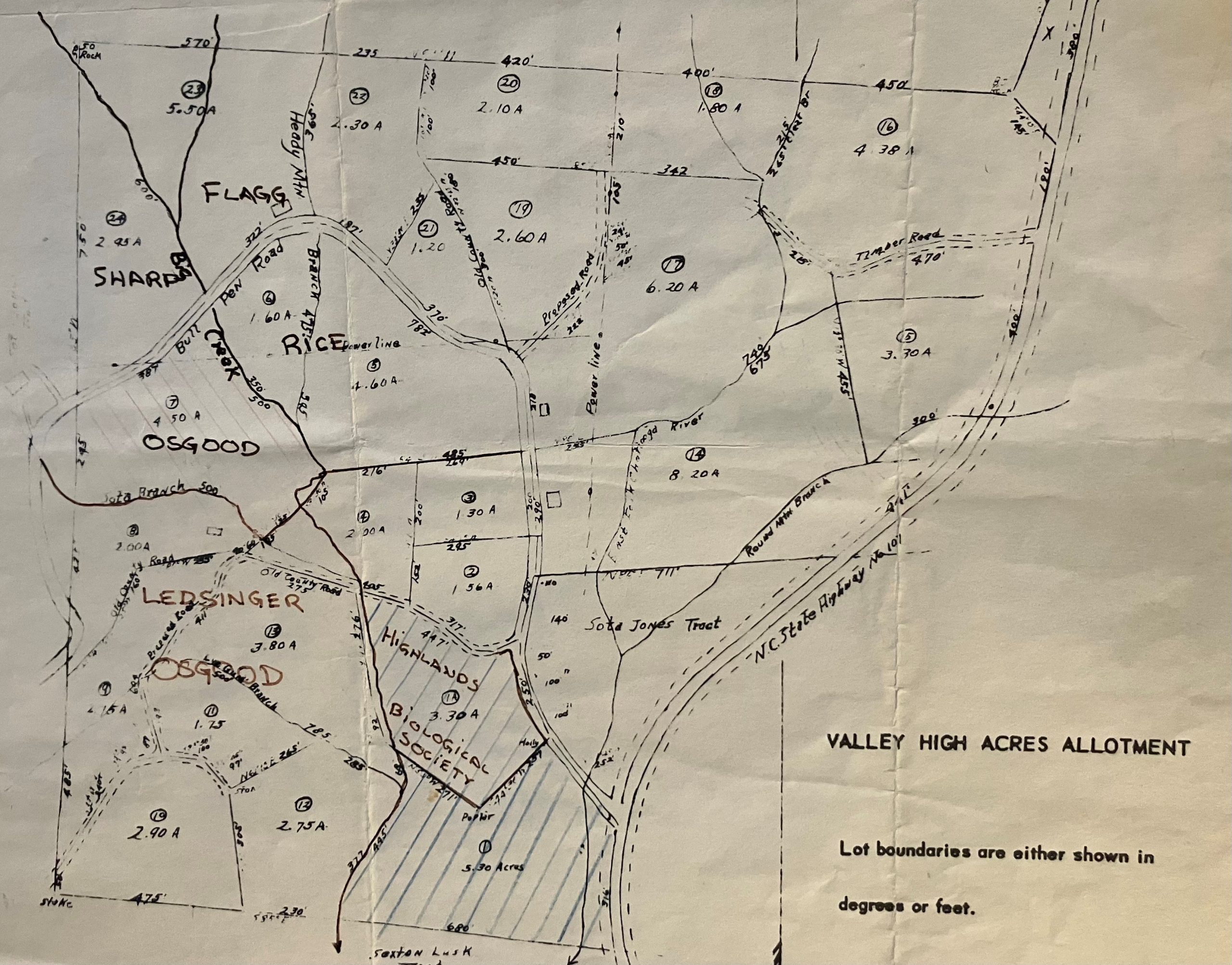
Dulany Bog map
